First Warning Letter Template for Workplace Issues
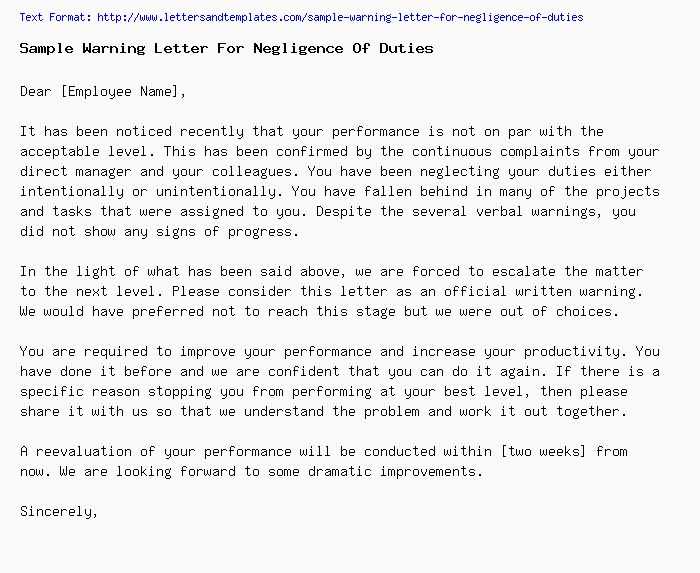
Maintaining open and transparent communication is essential for addressing challenges in any professional environment. Establishing clear guidelines and expectations ensures that all parties understand their roles and responsibilities, fostering a productive atmosphere.
When addressing concerns, it is important to approach the situation with professionalism and clarity. Properly structured documentation can serve as a reliable tool for outlining expectations, identifying areas of improvement, and providing constructive feedback.
Creating structured communication materials helps organizations handle sensitive matters effectively while promoting a culture of accountability. By emphasizing mutual respect and understanding, such tools can contribute to resolving workplace challenges efficiently and fairly.
Understanding the Purpose of Warning Letters
Clear and structured communication is essential for addressing concerns and maintaining harmony within any organization. Properly documented feedback can help ensure that expectations are communicated effectively, paving the way for improvement and mutual understanding.
The Role of Formal Documentation
Formal documents serve as a means to record and convey important information regarding workplace conduct or performance. They provide a clear framework for discussing areas that require attention while outlining steps for resolution. This approach promotes transparency and ensures that all parties are aware of the expectations moving forward.
Encouraging Accountability and Growth
Using formal records to address concerns fosters accountability by ensuring that both individuals and teams are aware of their responsibilities. Additionally, these tools can highlight opportunities for personal and professional growth, helping to build a more collaborative and productive work environment.
How to Draft a Professional Warning Letter
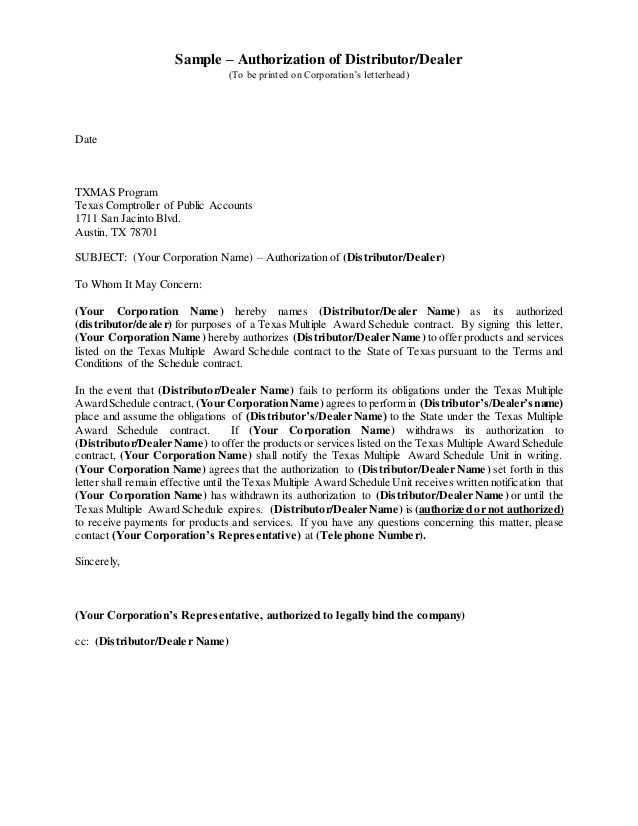
Crafting a formal document to address workplace issues requires precision and clarity. It is crucial to communicate concerns effectively while maintaining a tone of respect and professionalism. A well-structured approach ensures that the message is understood and encourages constructive resolution.
The initial step is to clearly define the purpose of the document. Identify the specific issue or behavior that needs to be addressed, ensuring that the description is factual and free from ambiguity. Including relevant details helps provide context and supports the accuracy of the communication.
Next, outline the expectations for improvement or corrective actions. Be explicit about the desired changes, providing realistic timelines or milestones when necessary. This demonstrates a commitment to finding a resolution while offering the recipient an opportunity to respond proactively.
Lastly, ensure that the tone remains professional throughout. Avoid emotional language or accusatory phrasing, as this can detract from the objective nature of the message. Instead, focus on fostering understanding and promoting a collaborative path forward.
Key Elements to Include in the Template
For a document to be effective in addressing workplace matters, it must be thoughtfully organized and include essential components. A clear structure ensures the message is understood and provides a foundation for constructive dialogue.
Accurate Identification of the Issue
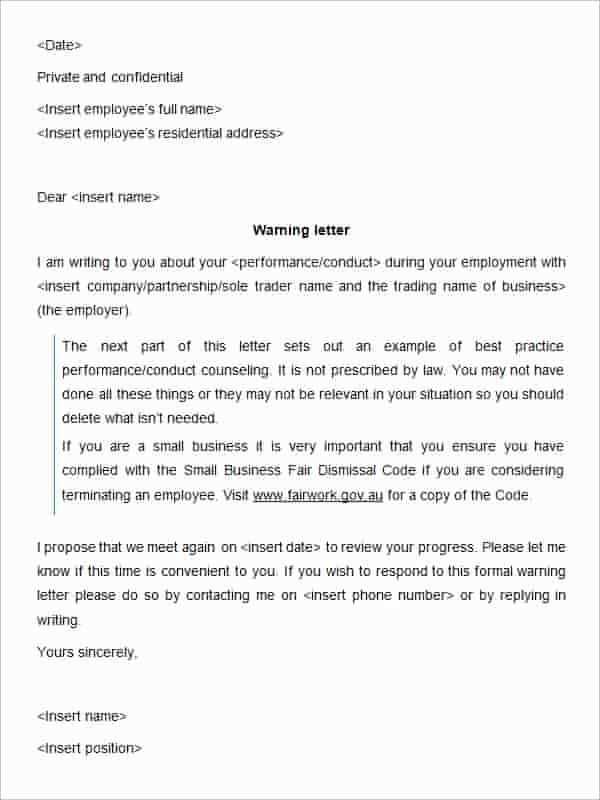
One of the most important aspects is providing a precise and factual description of the concern. This should include relevant details, such as specific incidents or behaviors, along with dates or times if applicable. Clarity in this section helps avoid misunderstandings and sets the stage for resolving the matter.
Outline of Expectations and Next Steps
Another critical component is a clear explanation of the actions required to address the issue. Whether it involves changes in behavior, meeting specific performance standards, or adhering to organizational policies, these expectations should be stated in an objective and actionable manner. Providing a timeline or deadline can further support accountability and progress.
By ensuring these elements are included, the document becomes a useful tool for fostering improvement while maintaining professionalism and respect in the workplace.
Common Mistakes to Avoid When Writing
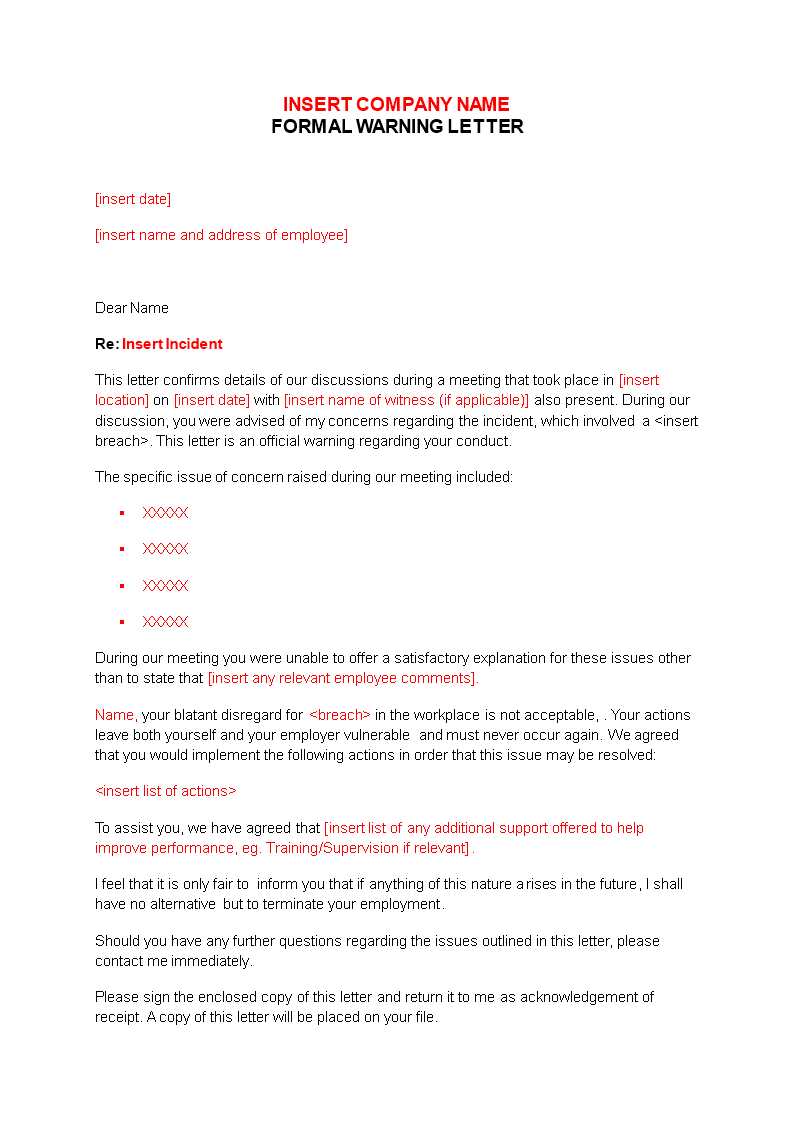
Creating formal documentation requires careful attention to detail. Errors in tone, structure, or content can undermine the purpose of the message and reduce its effectiveness. Identifying and avoiding common pitfalls ensures clarity and professionalism.
Below is a table outlining frequent errors and how they can impact the communication process:
| Common Mistake | Impact |
|---|---|
| Lack of Specificity | Generalized statements can lead to confusion and make it difficult for the recipient to understand the exact issue. |
| Overly Emotional Language | An accusatory or emotional tone can escalate tensions and hinder constructive dialogue. |
| Omitting Key Details | Leaving out critical information, such as dates or examples, weakens the message and reduces its credibility. |
| Unclear Expectations | Failing to outline actionable steps or desired outcomes makes it challenging to achieve resolution. |
| Ignoring Professional Tone | A lack of professionalism can damage trust and respect within the workplace. |
By addressing these common issues, you can ensure your communication remains effective and contributes to resolving concerns efficiently.
Tips for Delivering the Warning Letter Effectively
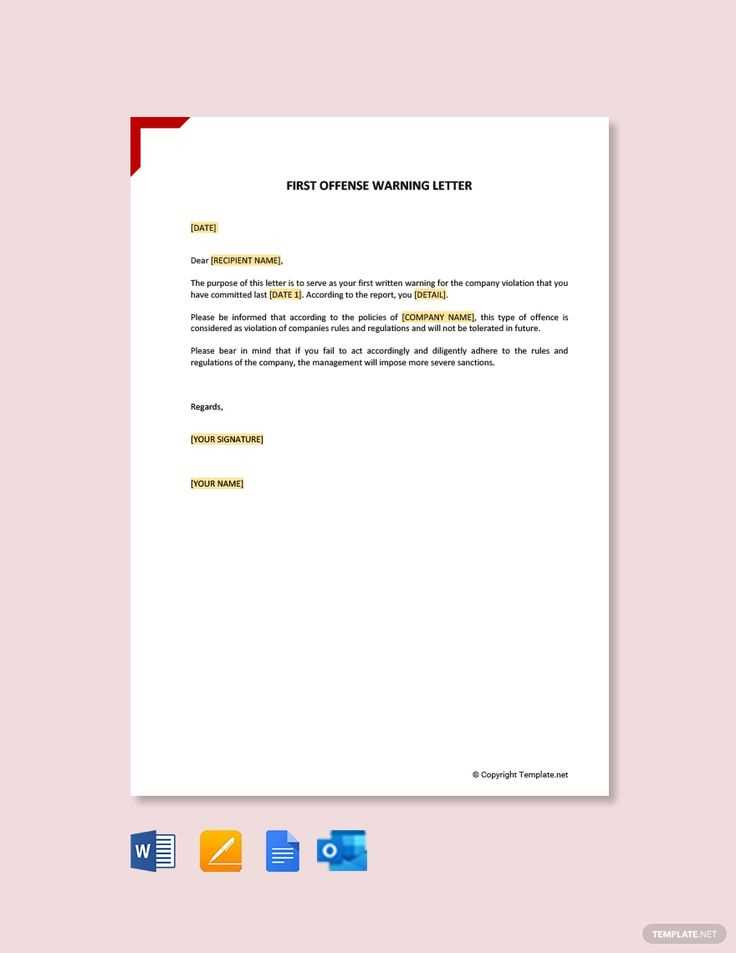
Effective communication is key when addressing sensitive matters in the workplace. How a formal document is delivered can significantly influence how it is received and understood. Careful planning and a professional approach are essential to ensure the message is both respectful and impactful.
Choose the Right Setting
Delivering the document in a private and neutral environment helps maintain confidentiality and minimizes distractions. This setting ensures that the recipient feels respected and allows for an open discussion, if needed.
Maintain a Professional Tone
During the conversation, use an objective and respectful tone to present the document. Avoid letting personal emotions or assumptions interfere with the delivery. Sticking to factual statements ensures clarity and reduces the potential for misunderstandings.
Provide an Opportunity for Questions
Allow the recipient to ask questions or clarify points during the discussion. This demonstrates openness and a willingness to support their understanding of the content. Offering guidance on next steps can further show commitment to resolution.
By delivering the document thoughtfully and professionally, you create an environment conducive to improvement while maintaining mutual respect.
Ensuring Clarity and Consistency in Communication
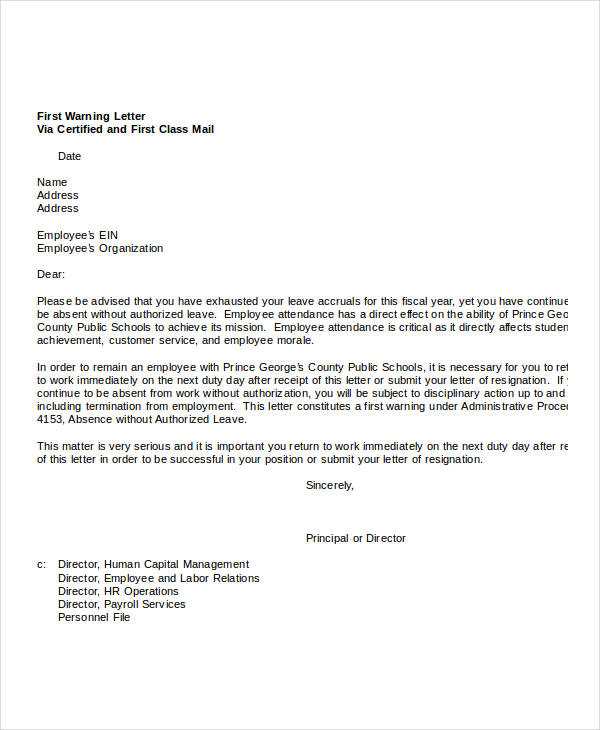
Effective communication relies on both clarity and consistency to ensure that the message is understood and acted upon correctly. By eliminating confusion and reinforcing key points, you can create a more productive and transparent conversation.
Key Strategies for Clear Communication
To achieve clarity in your communication, consider the following strategies:
- Use Simple Language: Avoid jargon or complex phrases that may confuse the recipient. Keep the language straightforward and easy to understand.
- Be Specific: Provide clear examples and details that relate directly to the issue at hand. This helps avoid ambiguity.
- Keep It Organized: Present information in a logical sequence to ensure the recipient can follow the flow easily.
Maintaining Consistency Throughout the Process
Consistency in communication ensures that messages remain aligned with the intended purpose. To maintain consistency:
- Stick to the Same Tone: Whether the conversation is formal or informal, maintaining a consistent tone throughout all communications is essential.
- Reinforce Expectations: Reiterate key points and expectations to avoid misinterpretation.
- Follow Up Regularly: Regular check-ins or follow-up communications help ensure that everyone is on the same page and that progress is being made.
By focusing on these aspects, you can ensure your message is clear, consistent, and effective, facilitating positive outcomes and reducing misunderstandings.